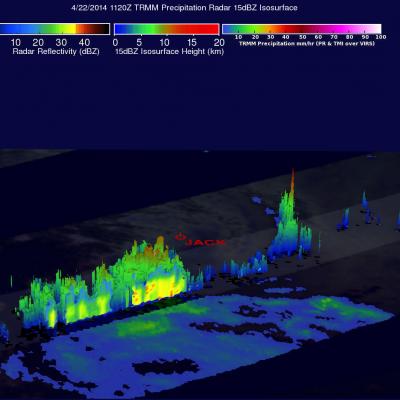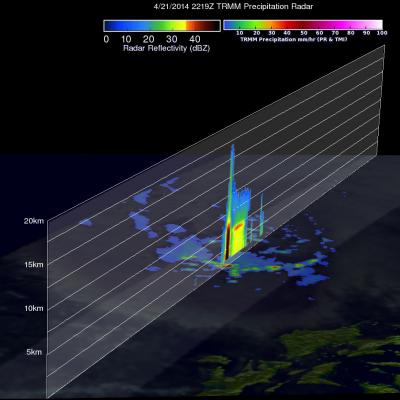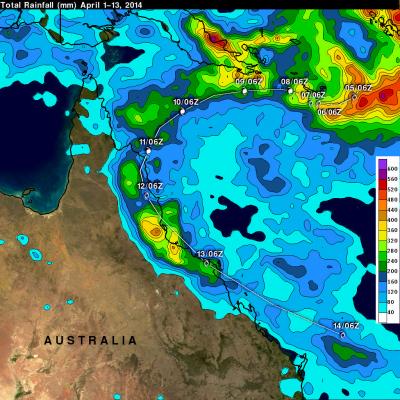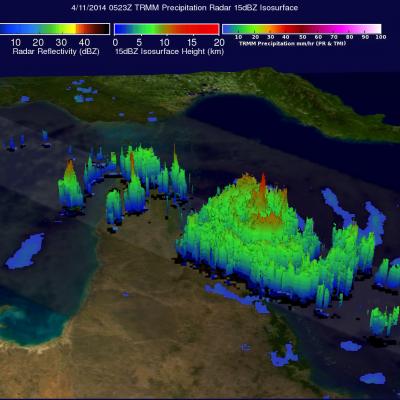Tropical Depression Jack
Tropical cylone Jack had weakened to a tropical depression when the TRMM satellite passed above on April 22, 2014 at 1120 UTC capturing data used in the images above. The approximate location of JACK's center is shown as a red circle. Almost all rainfall near the the tropical cyclone's center had ceased but TRMM PR found that Jack was producing rain at a rate of over 130mm/hr (about 5.1 inches) in outer bands.





